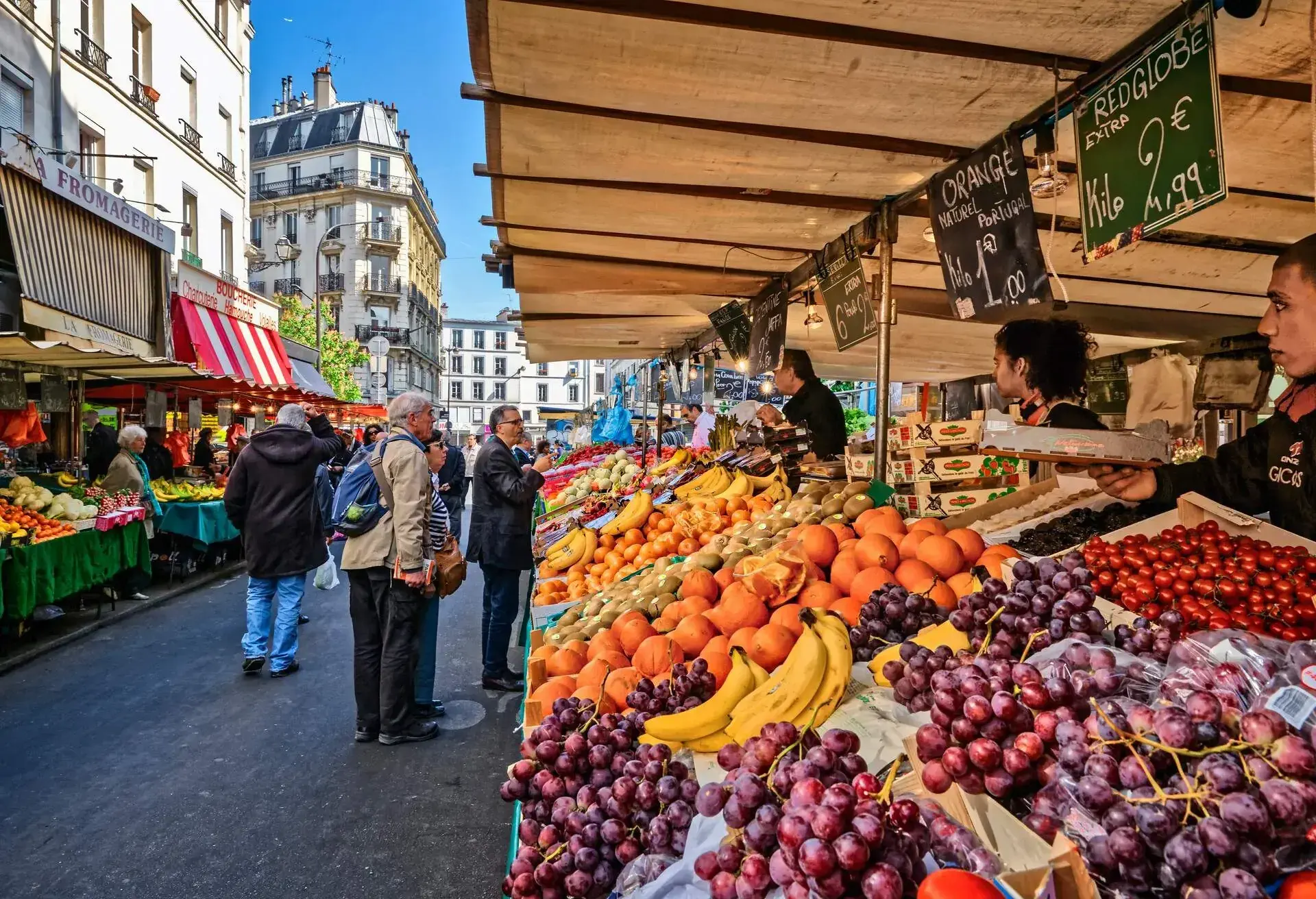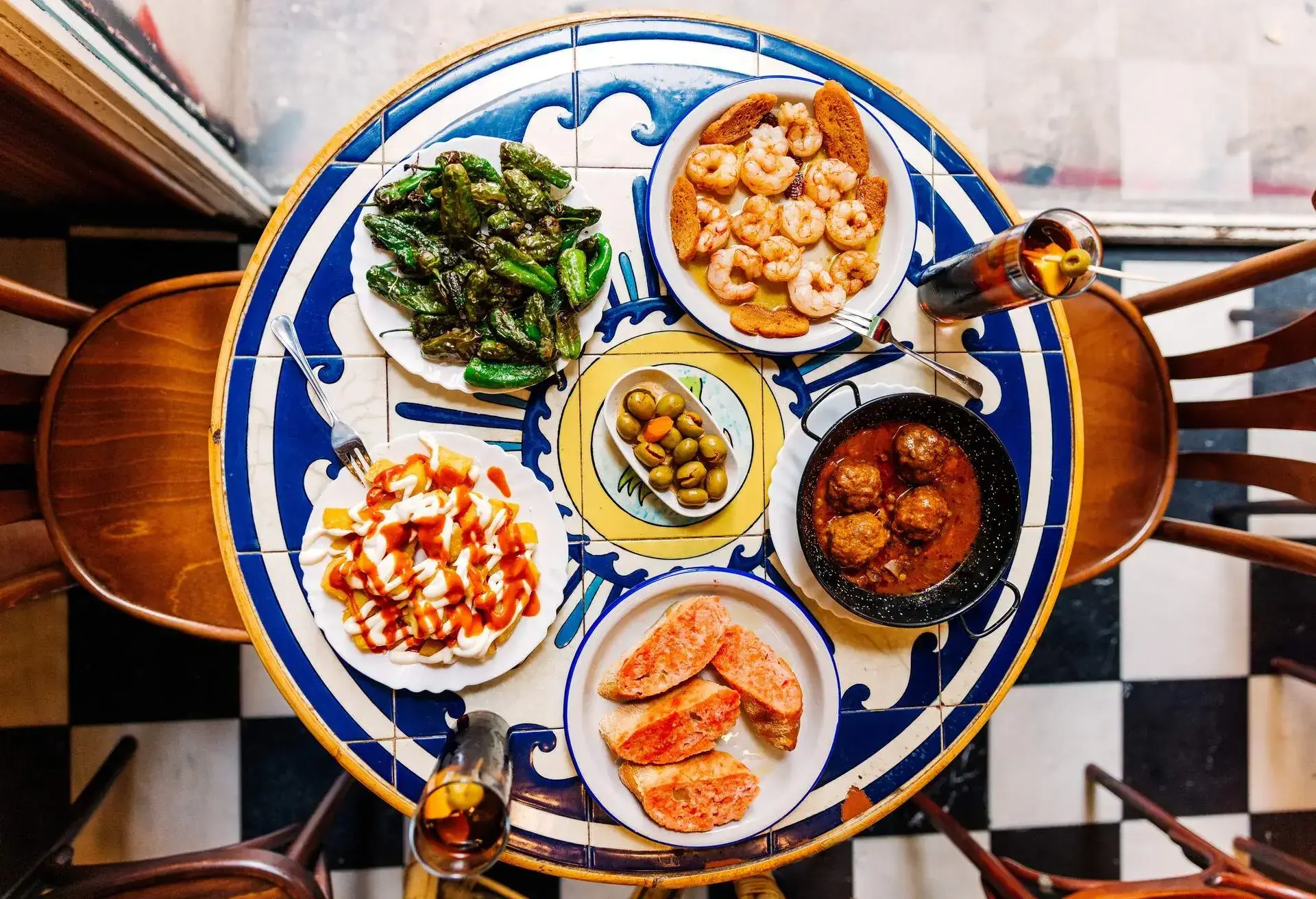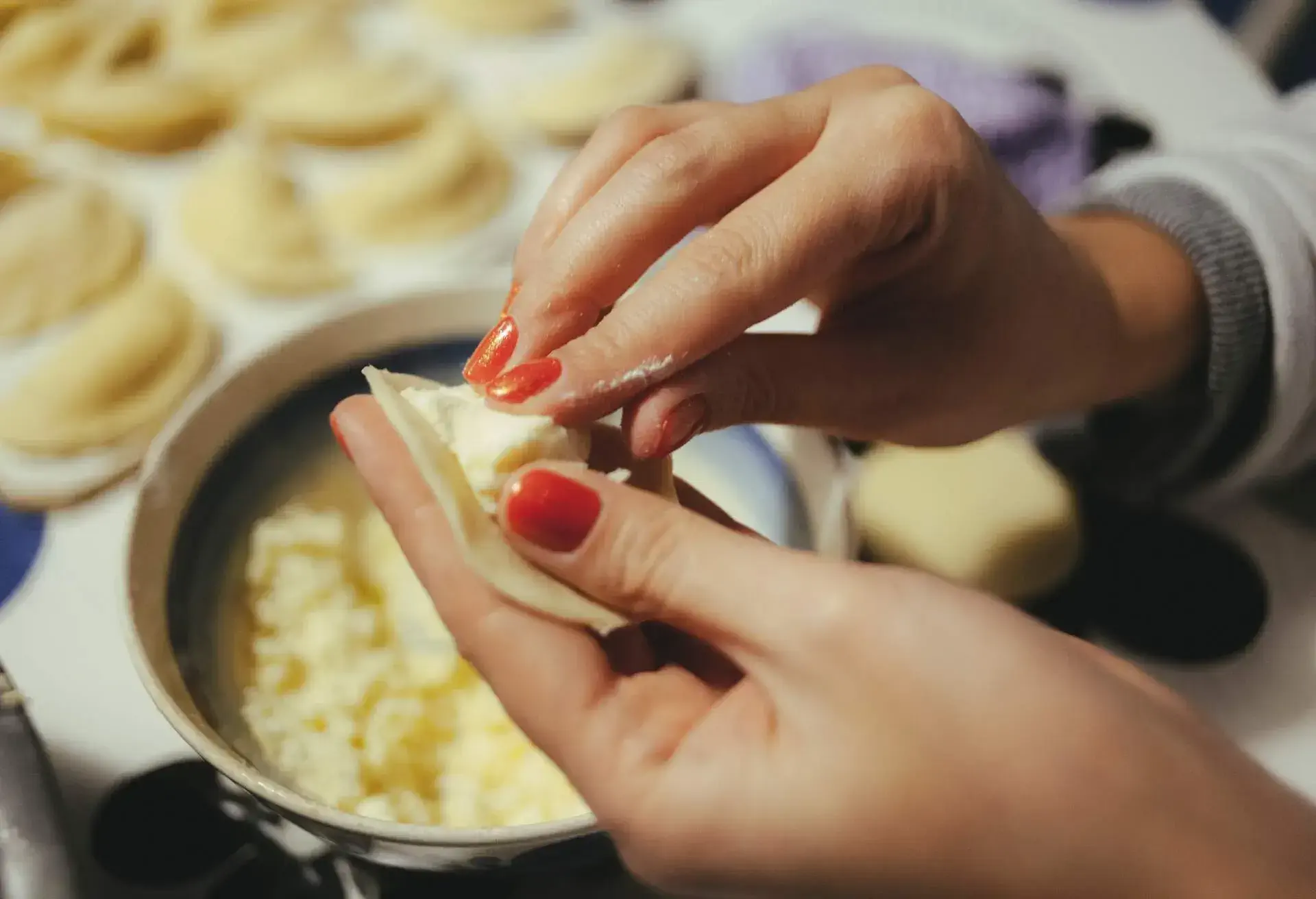Many a chef will tell you they owe their roots to traditional French food. Perhaps rightly so, given the vast array of options and cooking styles on offer.
It’s no surprise that the country that gave us the Michelin Guide is also the one whose cooking inspires haute cuisine around the globe. Often from humble beginnings, French cooking elevates the most modest of ingredients to something so flavourful that everyone wants a piece of them. But despite French food travelling the world over, there’s still no better place to taste it than it’s original home.
The best traditional French foods to try
From buttery pastries to rich slow-cooked dishes, there’s no shortage of food in France to add to your culinary bucket list. Not sure what to tuck into first? Here’s a few ideas for your next French road trip:
1. Croissants
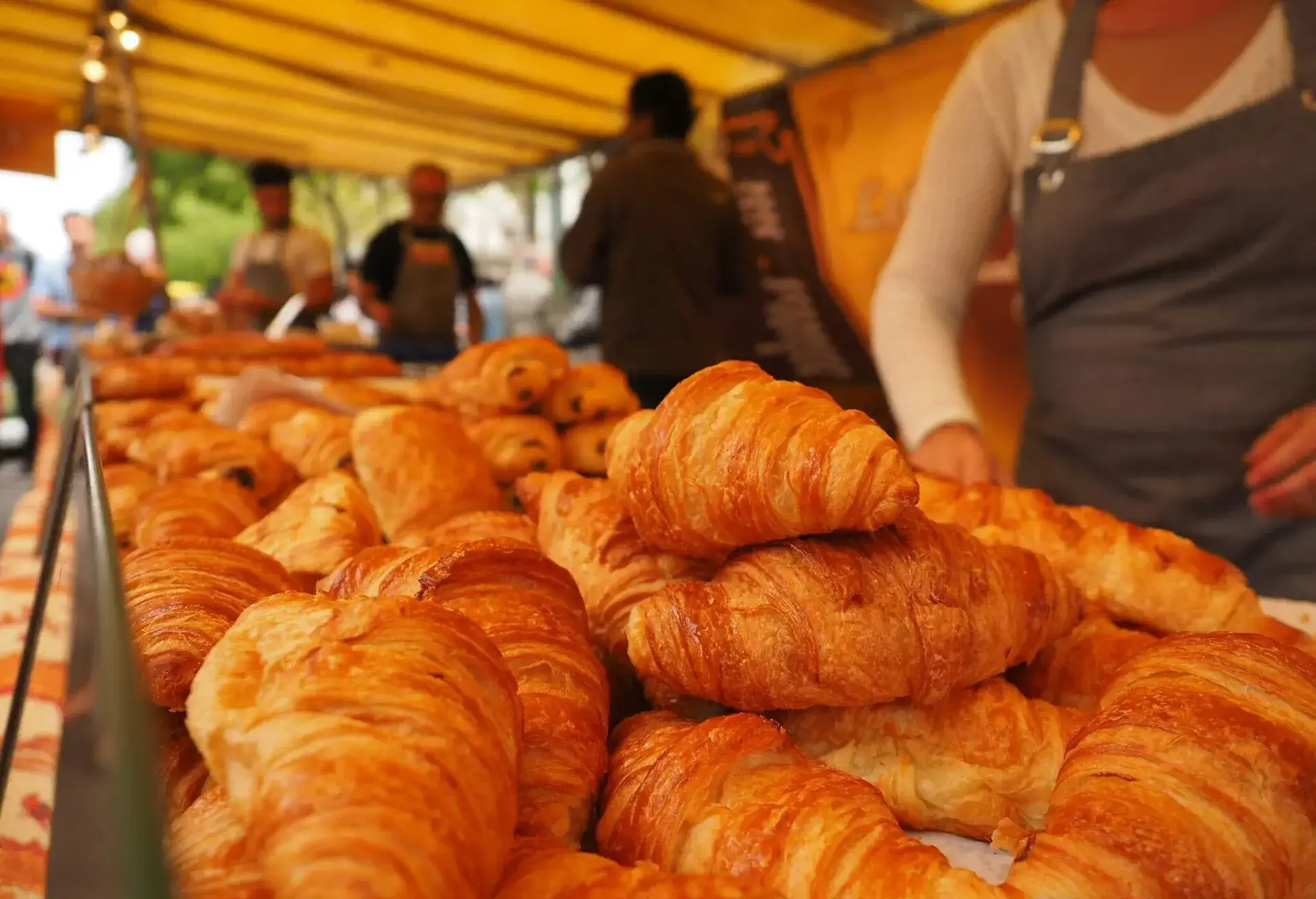
There’s no better place to start your France food journey than with a croissant. Nothing says French cuisine better than a croissant. I don’t mean the masquerading versions you’ll find in supermarkets which use oil instead of butter. I’m talking about a proper French croissant that’s flaky and on the cusp of almost burnt. It should have a deep golden colour with crispy layers on the outside, and a soft fluffy middle formed from perfectly leavened pastry and slatherings of butter.
You’ll find this classic French breakfast treat sold all over the country. If you happen to be in Paris, head to La Maison Stohrer on Rue Montorgueil. It’s one of the oldest patisseries in Paris and they do a fabulous almond-filled croissant, too.
2. Financiers
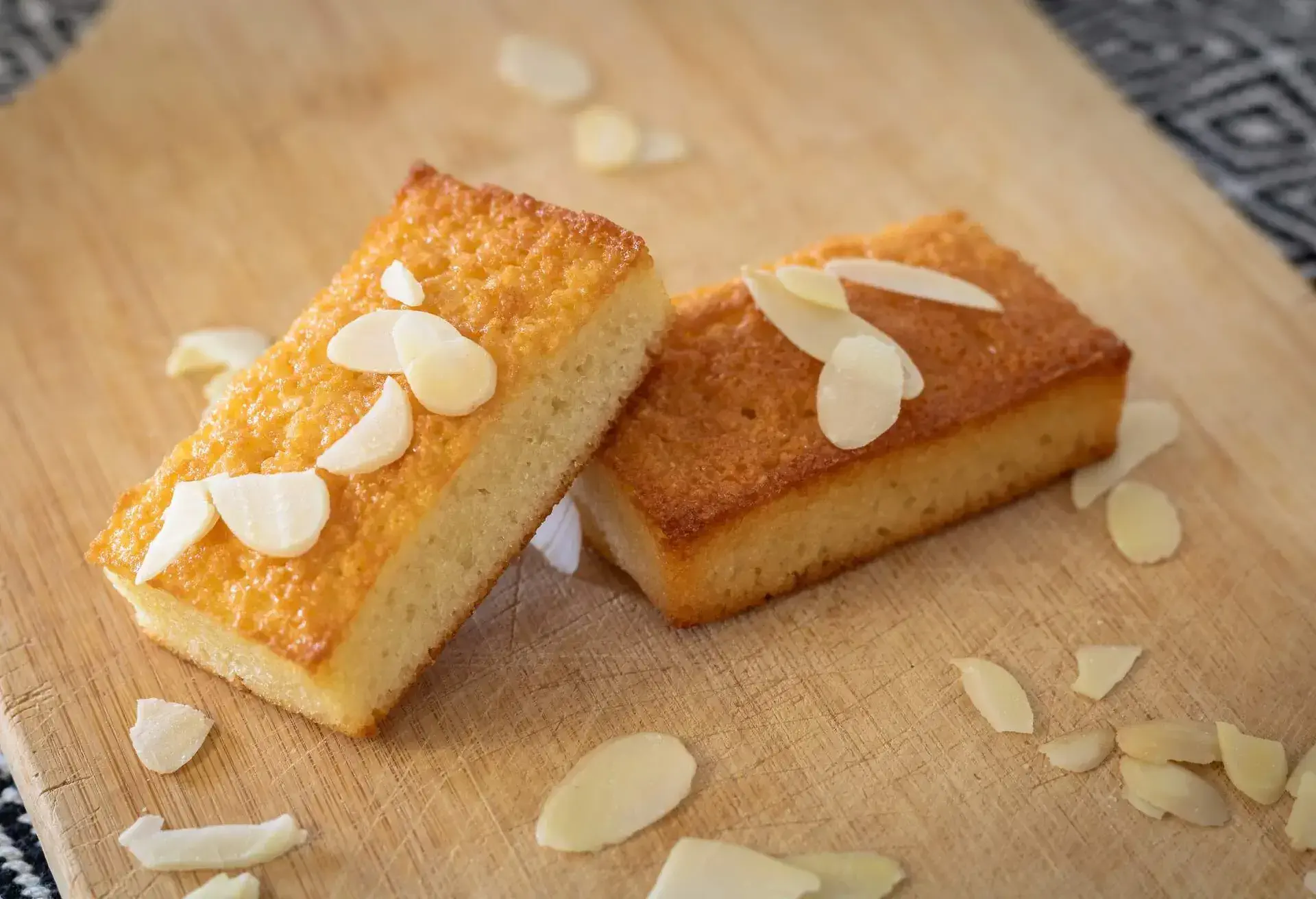
I can’t talk about traditional French food without mentioning the financier. It was a trend-setting cake before gluten-free was even a thing. Made using almond flour, icing sugar, egg whites and beurre noisette (melted golden butter), these little cakes really do just melt in your mouth.
A financier is light, ever so slightly chewy and utterly delicious. They say it was first made by nuns in Lorraine as far back as the 17th century. It became popular and probably got its name later in the 19th century when an enterprising baker in Paris started making them in the shape of gold bars to sell to his financial customers. The financier was here to stay – with plenty of patisseries around the country still baking them daily today.
3. Madeleine
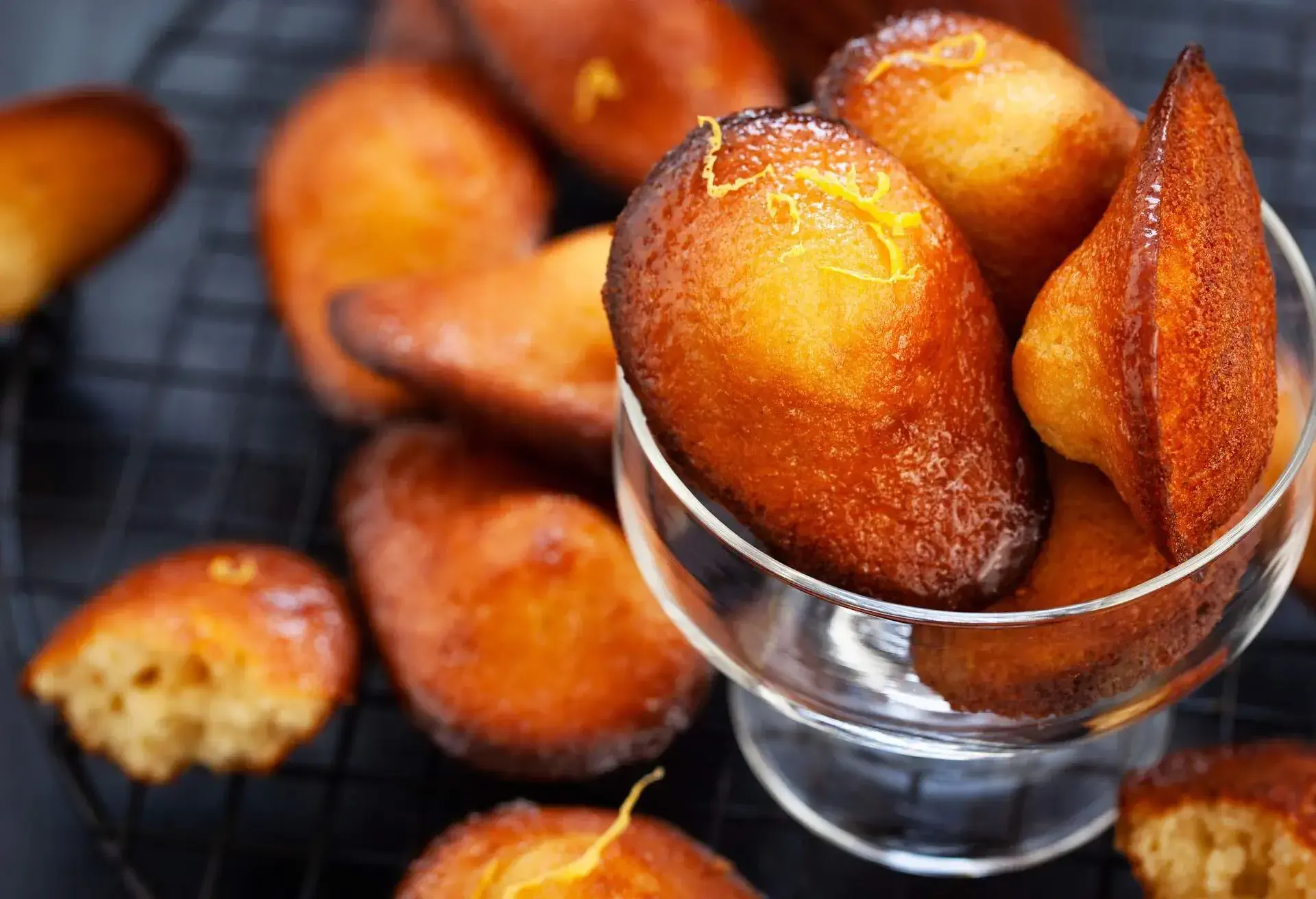
Similar to the financier and also with origins in Lorraine, the Madeleine is yet another sweet French food you must try. It’s as French as you’ll get and often eaten hot accompanied by a steaming cup of coffee at many French food markets.
Essentially, the Madeleine is a cross between a small cake and a biscuit. It’s made from a cake mixture, with a trace of lemon zest and plenty of butter, of course. The batter is left overnight before being baked in a tray with a distinct shell-like pattern which leaves it slightly crunchy on the outside with a dome-like soft middle. Delicious!
4. Croque Monsieur
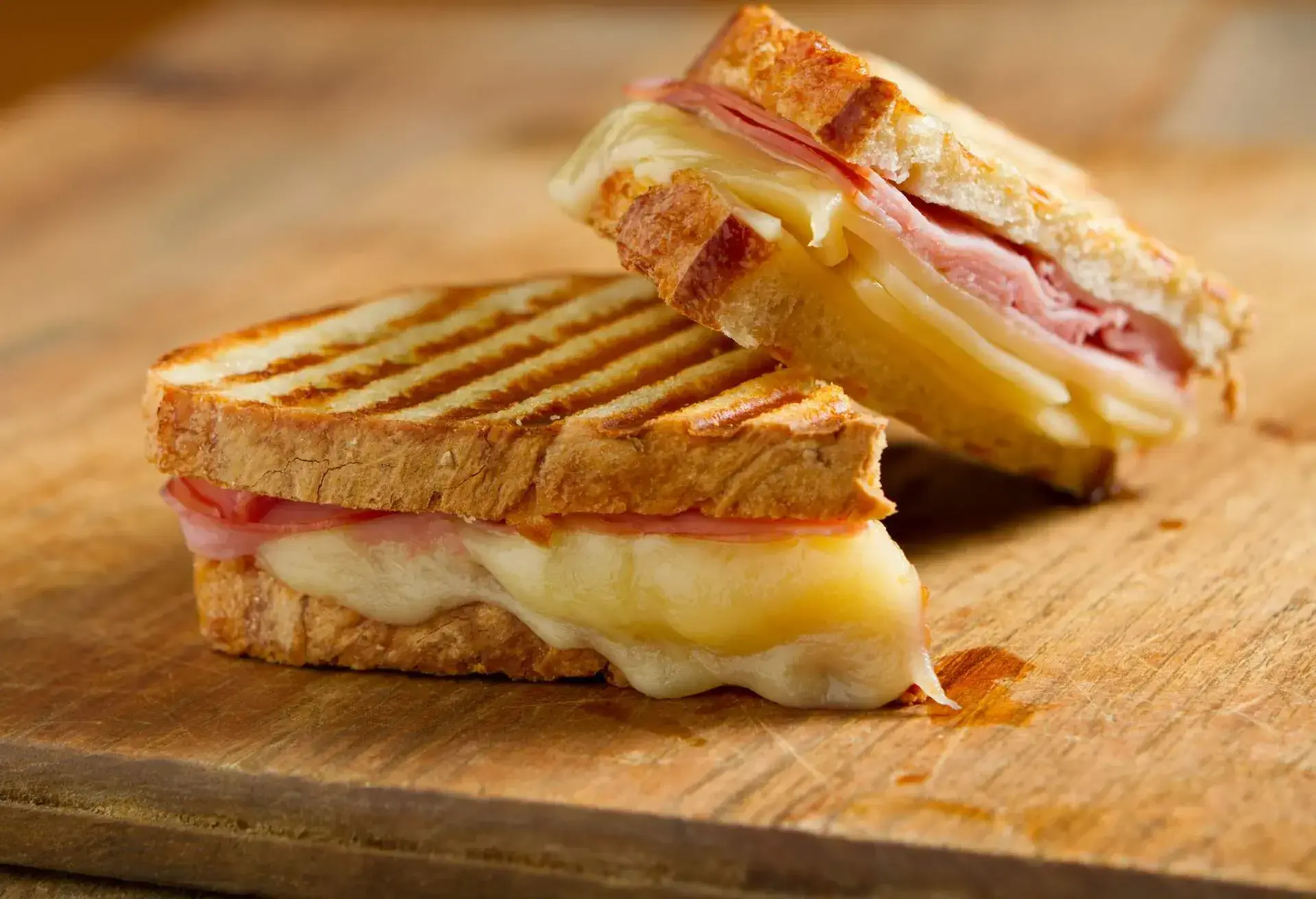
Now to more savoury traditional French food – and there’s plenty to pick from. The tasty croque monsieur is an excellent place to start. This ‘gentleman’s sandwich’ became a favourite of many Parisian cafés as early as the 1900s. It’s made with bread stuffed with ham and gruyere cheese, topped with a bechamel sauce and then grilled until golden and gooey.
While it may have fallen out of favour due to mediocre reproductions over the years, it’s recently made a comeback in leading French cafes and restaurants like Le Fromage par Laurent Dubois MOF, TRAM and Le Carreau.
5. French Onion Soup
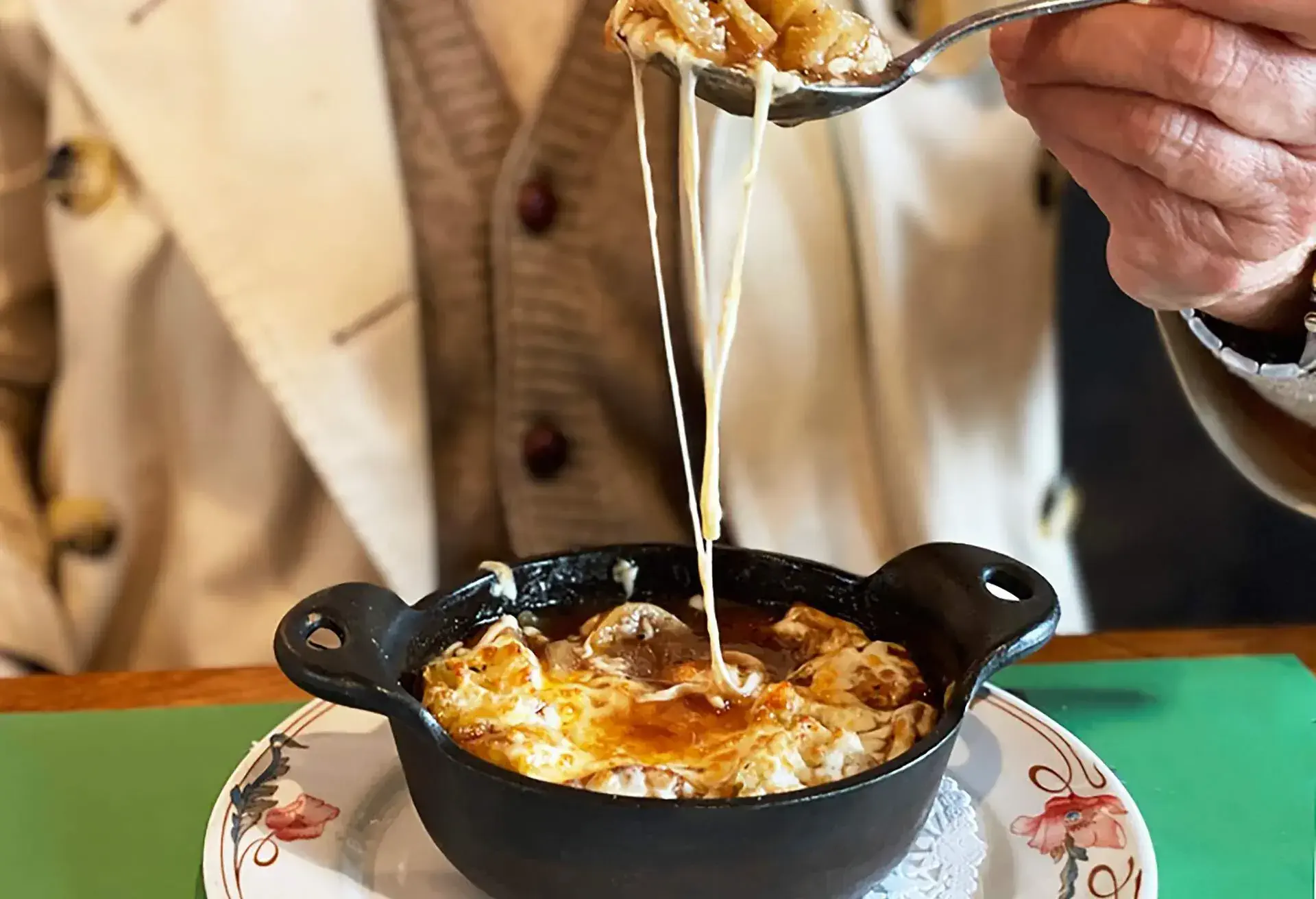
A dish that comes with notoriety and royal aspirations is the French onion soup. Notoriety because it started being served on New Year’s Eve or after a wedding to disguise the smell of alcohol (and as a hangover cure). Royal aspirations because both accounts of its origin have royal links. One is to Louis XV who, when hungry at one of his hunting lodges, made a soup from the only ingredients available to him: onions, butter and champagne.
The dish has moved on since the 1700s and is now made with beef stock, onions and bay leaves boiled down, leaving a rich, silky and slightly sweet soup. It’s topped with a hunk of bread with cheese, grilled before serving. Hangover or not, it’s delicious warm on a cold winter’s day – especially with a glass of something red.
6. Escargot
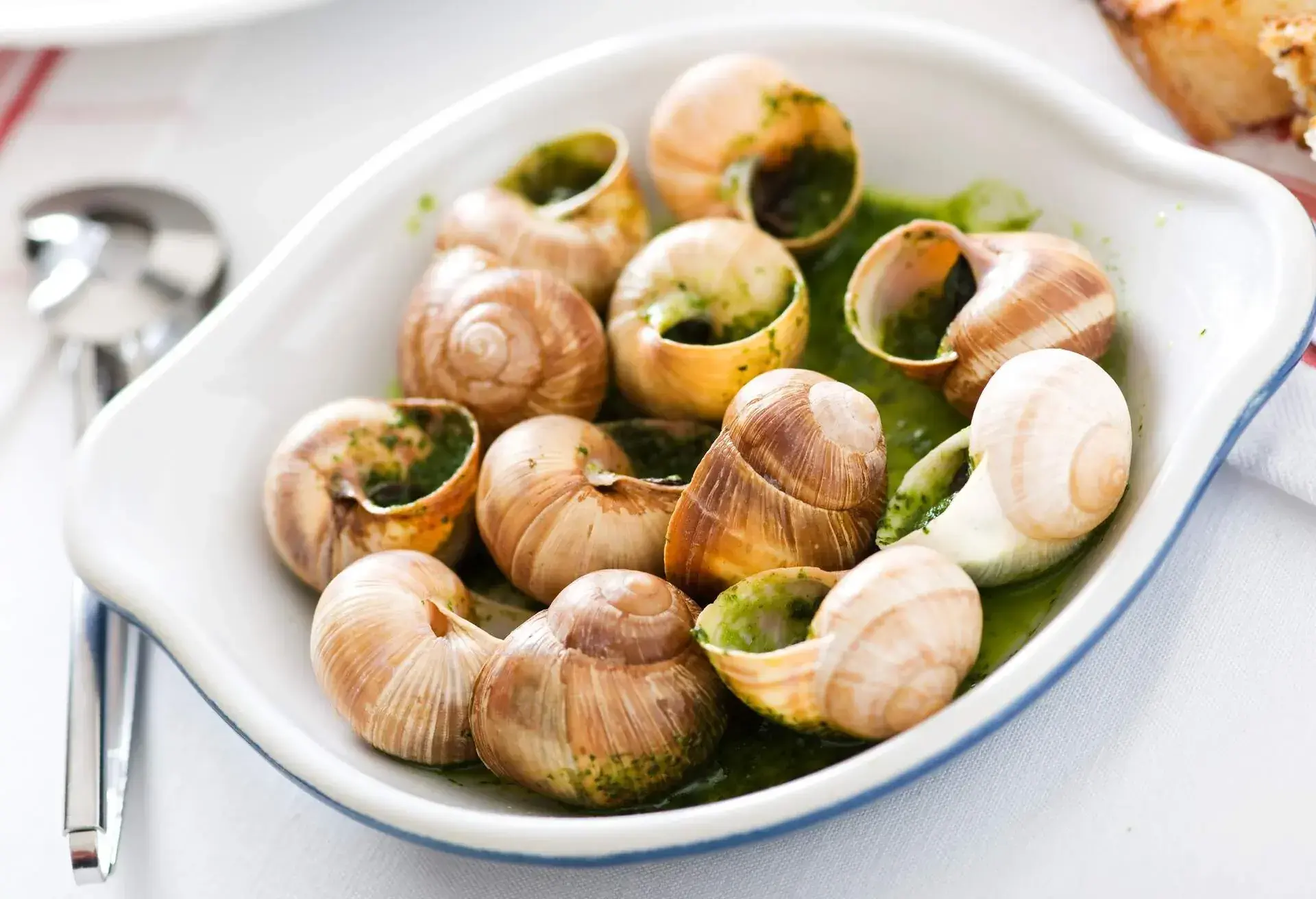
Few things are more unique to France food than escargot (snails). Anyone who is a foodie has got to try them. After all, they have been a popular starter ever since they were served at a banquet for a visiting Tsar in 1814.
This dish isn’t just made from any old snails, though. Escargot snails are specially farmed and undergo a rigorous set of cleaning methods to make them edible. The work involved explains their often hefty price tag, but it’s all worth it – even if it’s just to savour the accompanying sauce: a garlic and parsley butter that’s dripping in flavour.
7. Moules Marinière
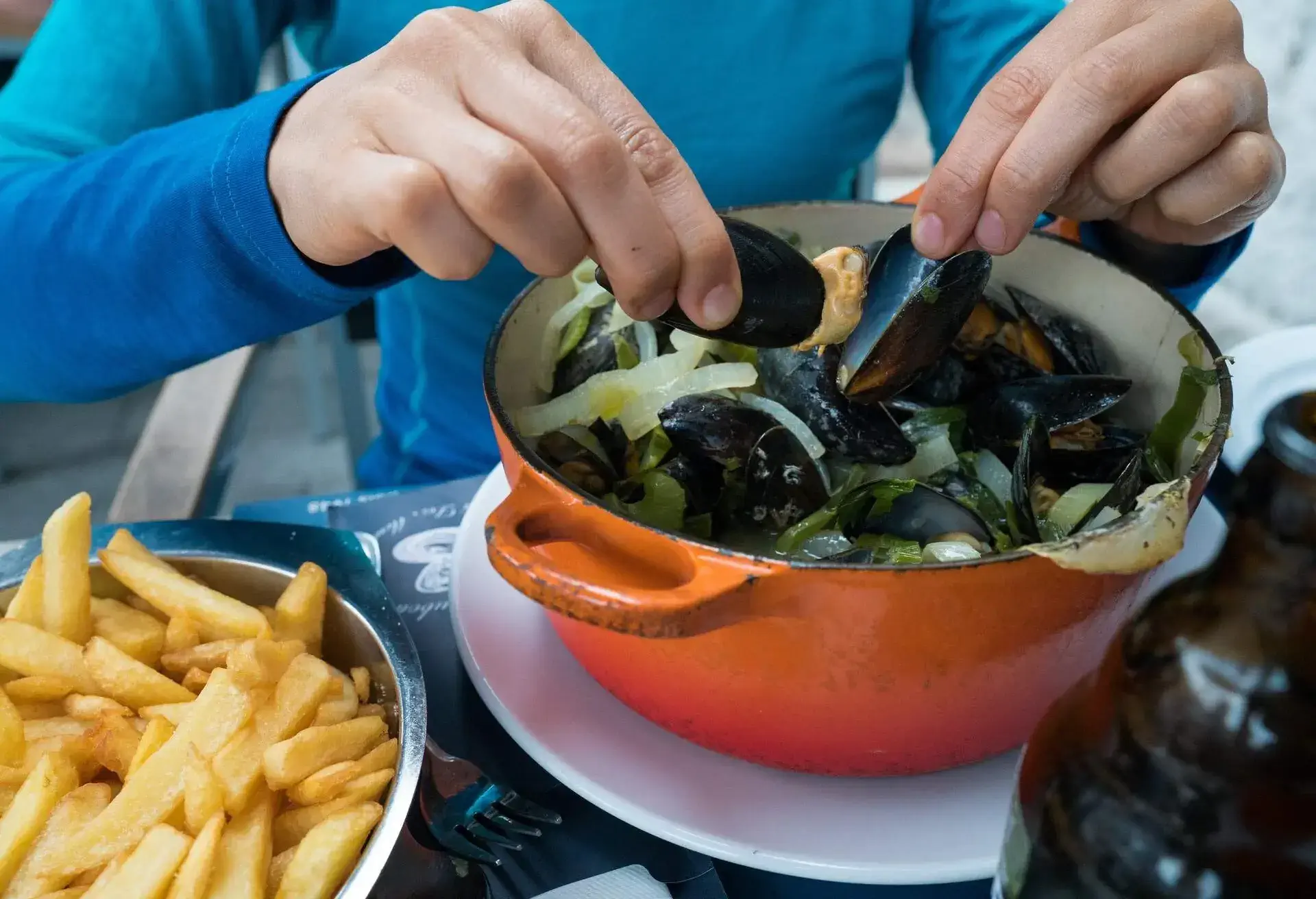
Despite having its origins in Belgium, moules marinière is firmly woven into France’s food tapestry. You’ll find this very simple and utterly delicious dish featuring mussels steamed in white wine, shallots and herbs at roadside cafes, bistros and top restaurants.
The typical side helping to go with it is, of course, pomme frites – those rather slender and perfectly crunchy French fries. A hunk of baguette will do just as well, too. And whether you’re trying it in the summer or winter, the dish never fails to please.
8. Pissaladière
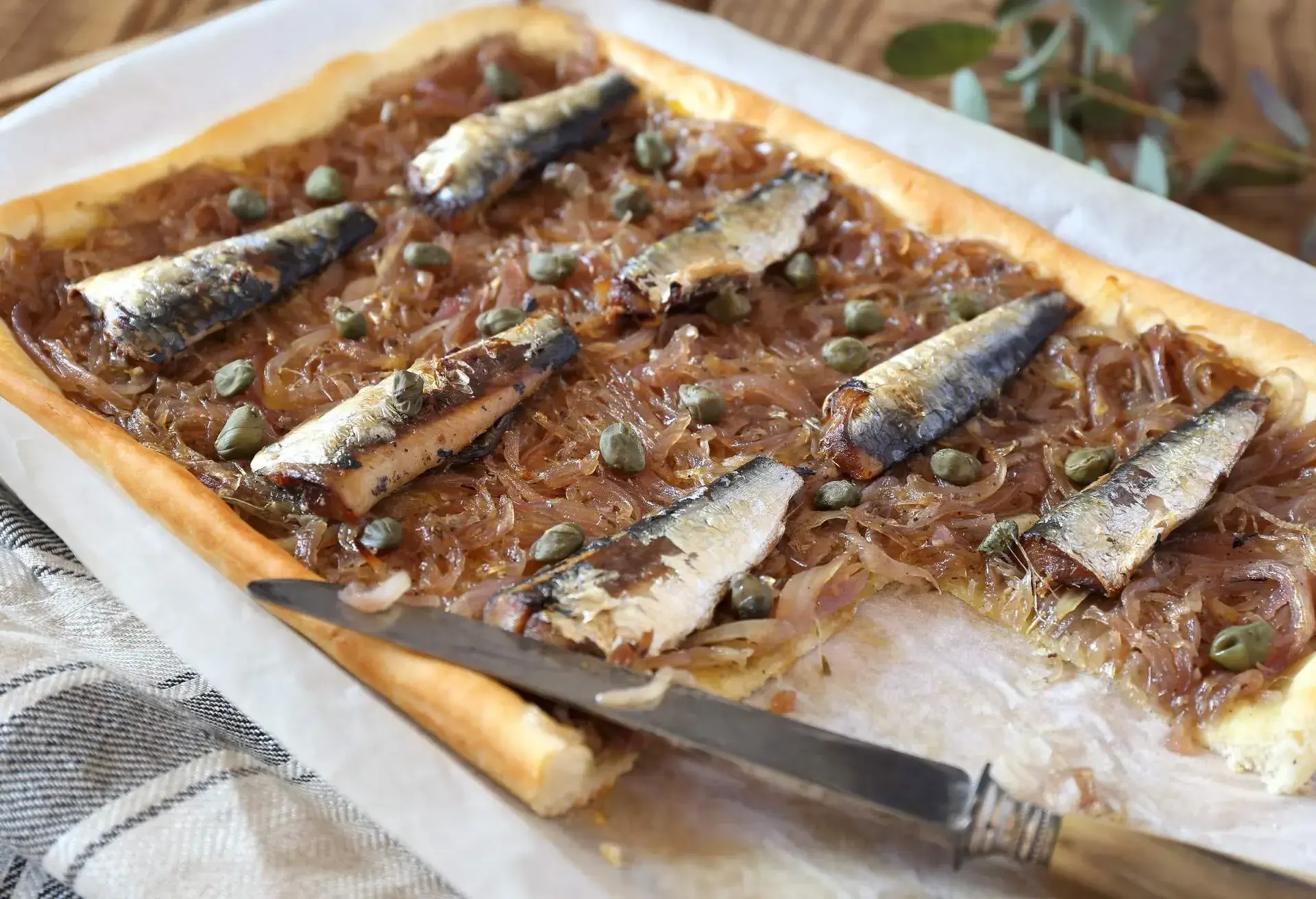
Where the Italians have pizza, the French have pissaladière. This Moorish flatbread with caramelised onions cooked down to almost a puree then topped with olives and anchovies originates from Nice. You can enjoy it as an appetiser or nibble on a slice with drinks.
9. Salade Niçoise
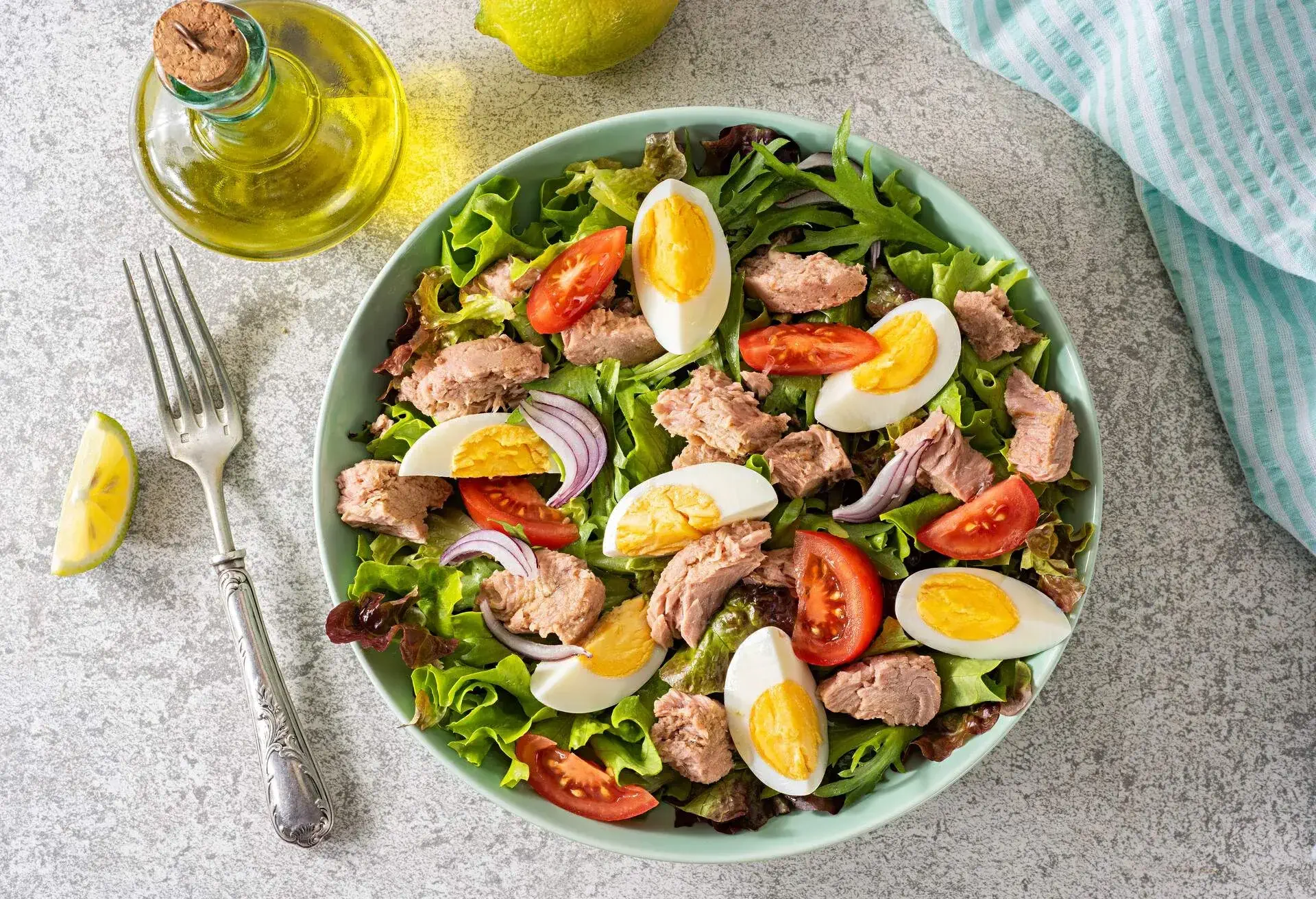
Another loved dish from the French Riviera is the salad Niçoise. The ingredients may vary depending on the season, but the base salad includes tomatoes, anchovies, green beans, tuna, capers, and black olives topped with a boiled egg. It’s a pretty wholesome French dish that’s best enjoyed in the summer drizzled with a lemon, garlic and olive oil dressing.
10. Cassoulet
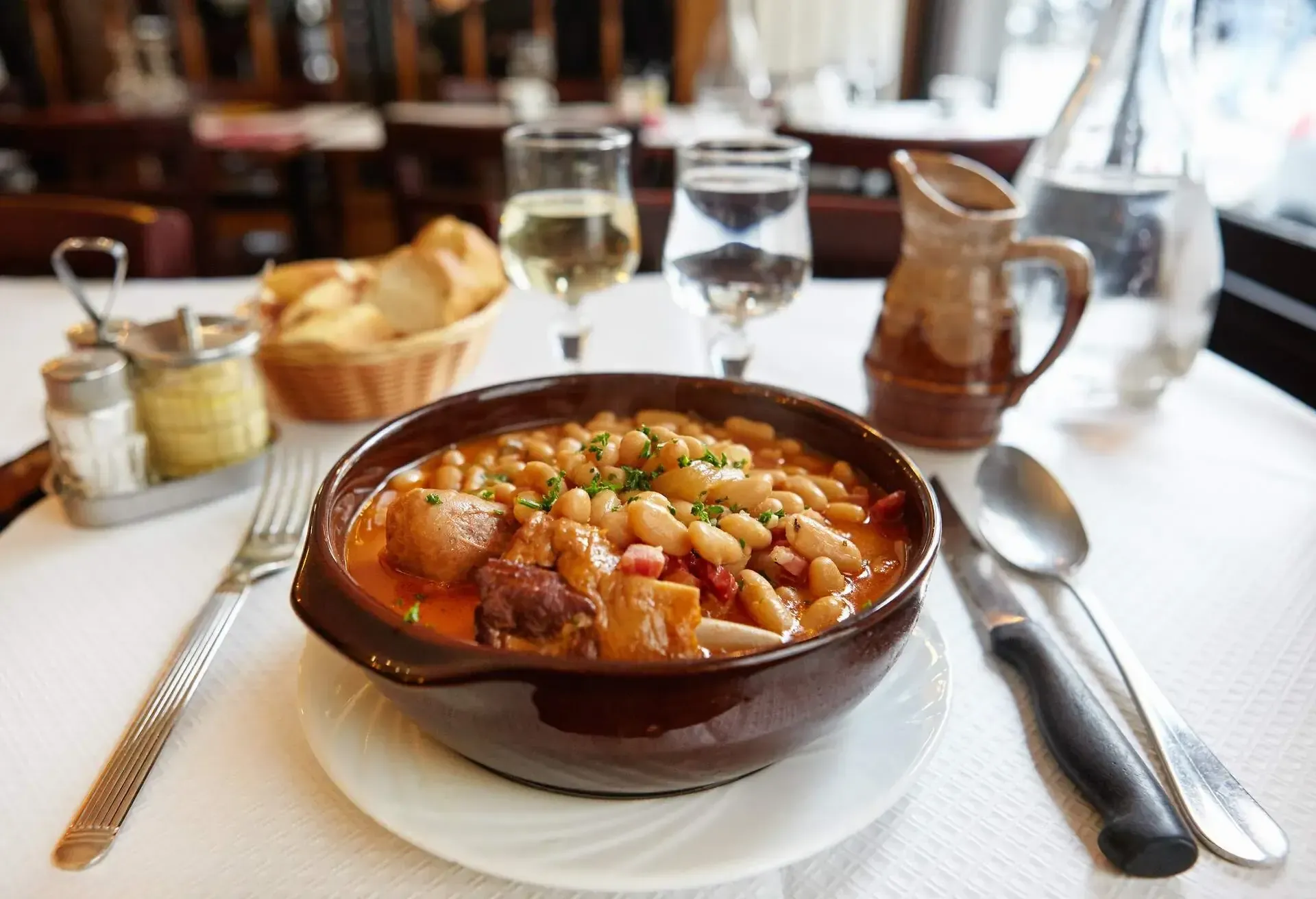
Moving onto main dishes that embrace the French cooking style, there’s no better example than cassoulet. You’ll find this traditional French food served all over the country. And while there are different regional variations, it is in essence a beautiful rich casserole that takes hours, sometimes days, to prepare and cook.
The base ingredients include white beans, pork loin, pork belly and sausages. However, some regions also add duck, goose and even mutton. The meat is cooked for hours along with a few vegetables for flavour. Eventually the beans go mushy and soft while the meat is melt-in-your-mouth tender. Originally a peasant dish, it’s loved and revered in many parts of France. I’d recommend going to Carcassonne for an authentic cassoulet experience.
11. Boeuf Bourguignon
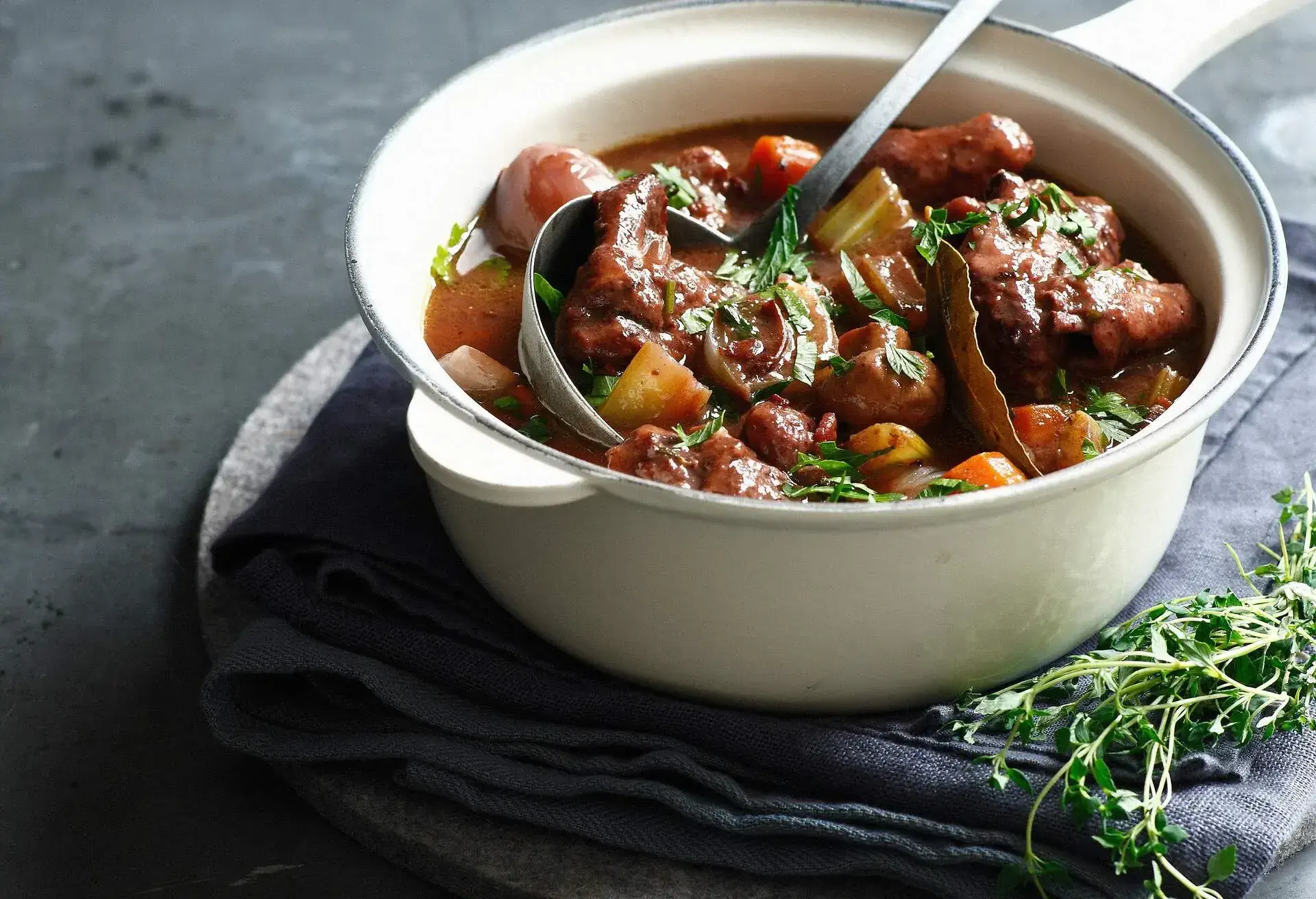
Another traditional dish that is very regional and exemplifies traditional French cooking is the boeuf bourguignon (or beef burgundy). It’s basically a beef stew with plenty of red wine added to it. It’s thought to have originated from the Burgundy region, which is known for its red wines and for its excellent beef.
While it may sound basic, the flavours in boeuf Bourguignon are far from it. It’s traditionally cooked with little pearl onions, button mushrooms, bacon lardon and beef stock, all reduced to a rich, silky deep brown sauce. Have it with a side of dauphinoise potatoes (see below) and, it goes without saying, a glass of burgundy wine.
12. Bouillabaisse
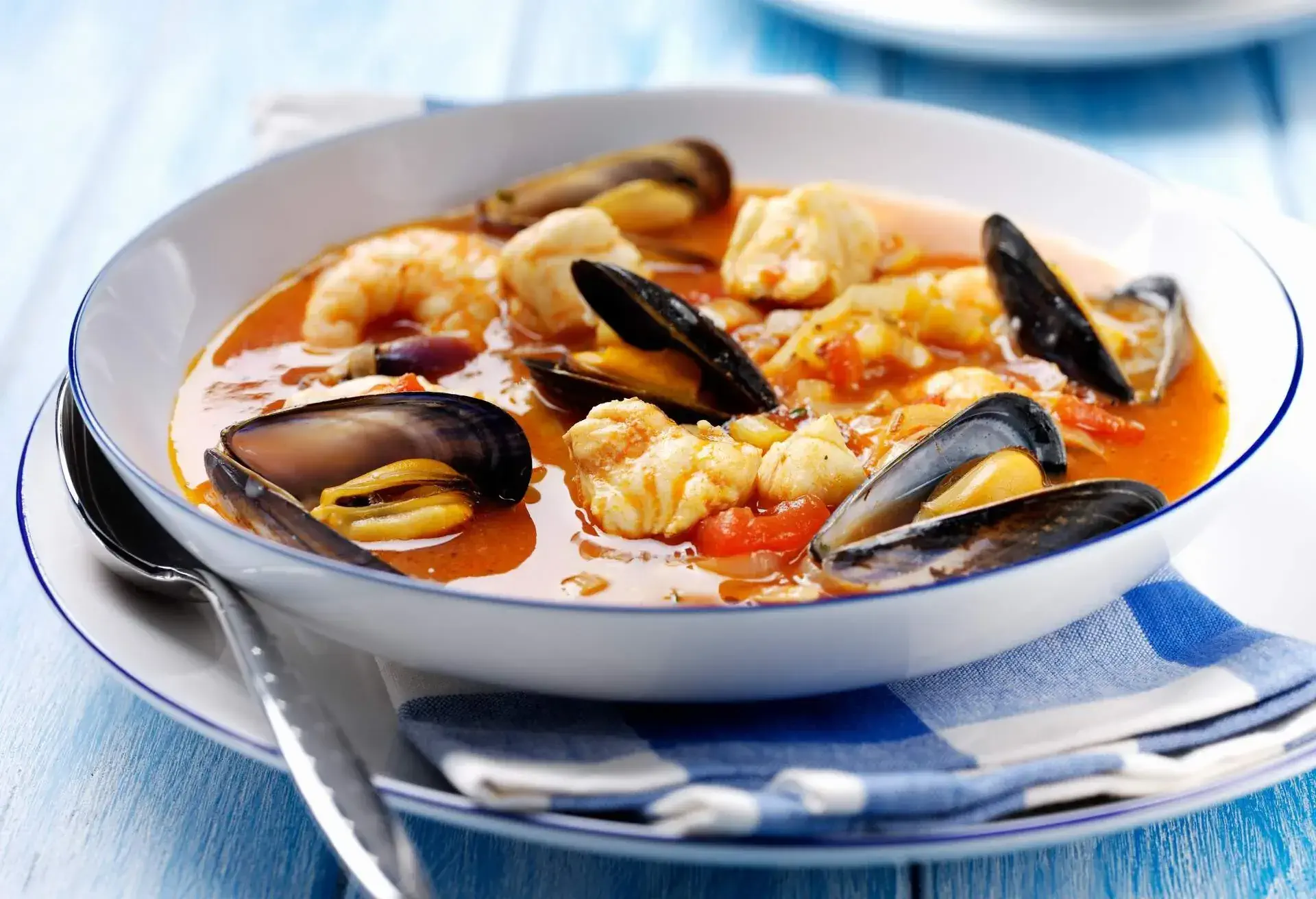
If you head down to Provence, or more specifically Marseille, you’ll find much of the typical French food is fish based. One of the most famous French foods in the region is bouillabaisse: a dish that even inspired Julia Childs who lived in these parts for over a year. It’s a sort of fish stew, with a base featuring fennel, garlic, onions, tomatoes, thyme, bay leaves, olive oil, orange peel and saffron.
Fish is added to the mix, bones and all, with the variety depending on the fisherman’s catch of the day. The brightly coloured rich stew is then usually served with boiled potatoes and a piece of bread smothered with rouille (a saffron-infused mayonnaise). It truly is a must-try for fish lovers!
13. Duck Confit
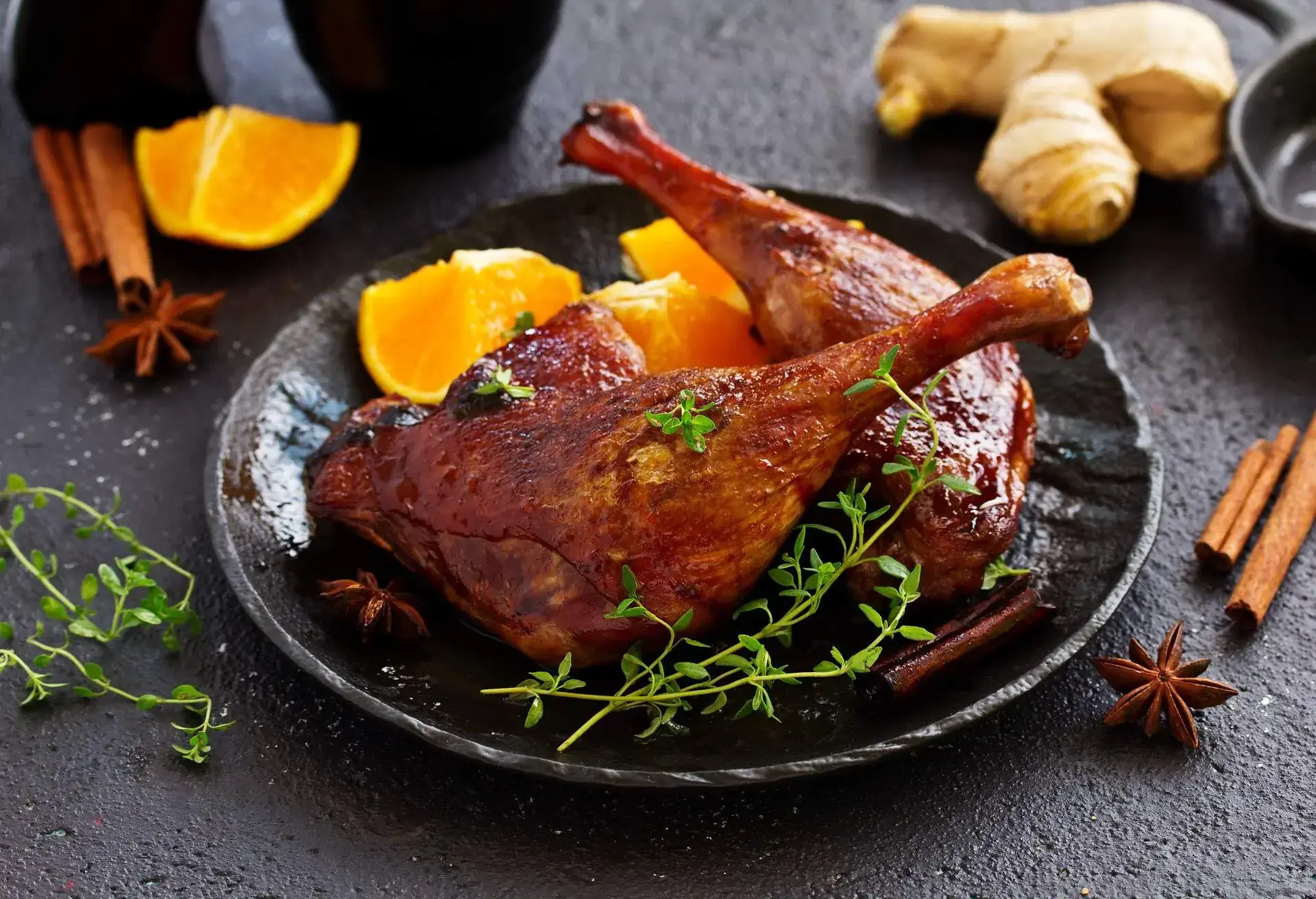
If ever there was a dish that encapsulated traditional French food, it’s confit de canard (or duck confit). What first began as a method of preserving meat before the refrigerator resulted in one of Gascony’s most enjoyed dishes.
Typically, the duck leg is cured with salt before being cooked at a low temperature over several hours, resulting in the crispiest, most flavour-packed piece of duck you’ll ever taste! Enjoy it as a starter or as a main course with mashed potato – and wash it down with a glass or two of cabernet.
14. Poulet Basquaise
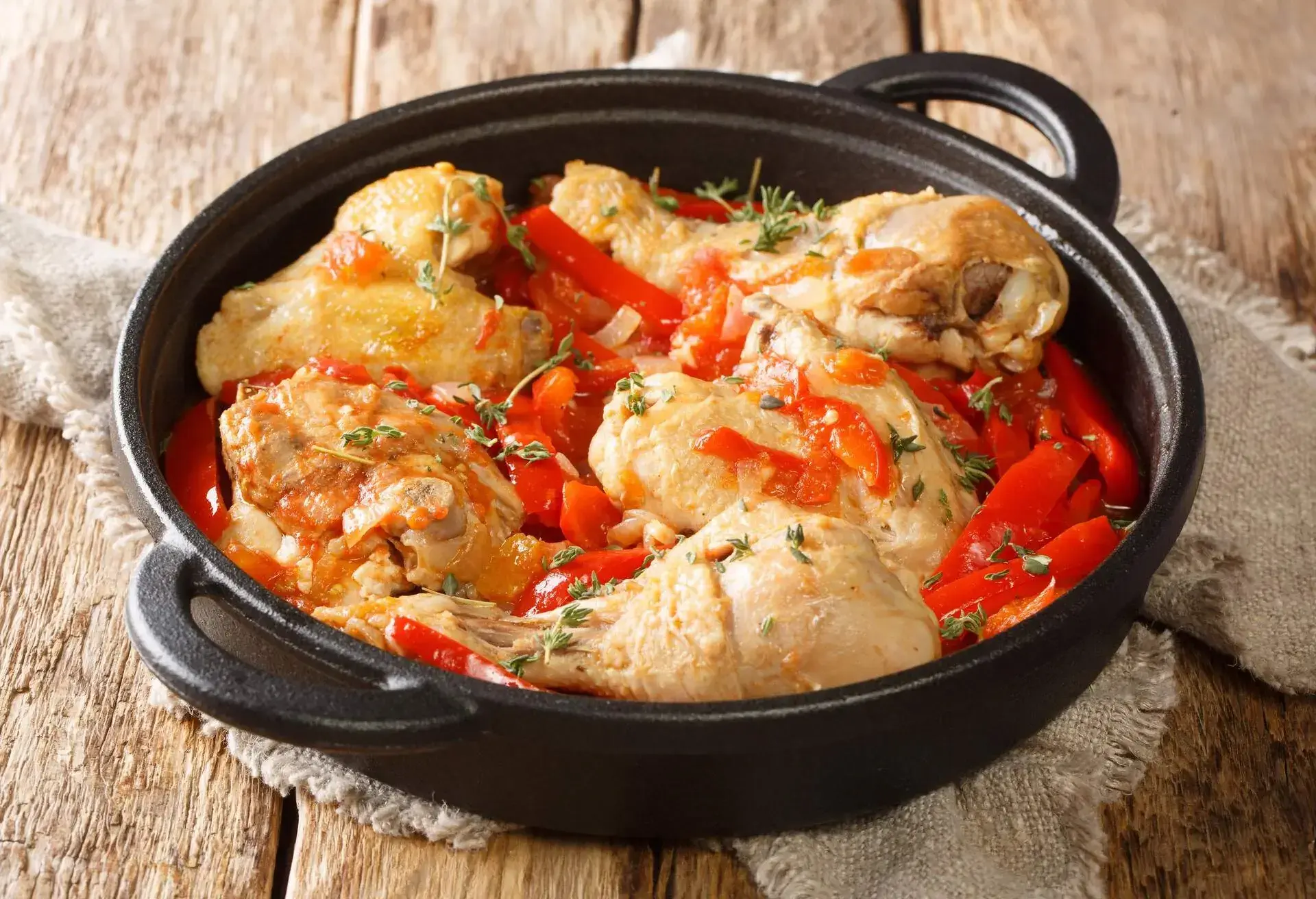
It may have Spanish origins, but the poulet basquaise is as traditional in Southern France as any other dish. As it’s name suggests, it originated in the French Basque country – with it often appearing on menus in the elegant beach resort of Biarritz.
Red and green peppers are typically cooked down to form the base of this beautiful chicken hot pot. Chicken is then added before the dish is cooked in the oven for several hours. It’s a beautiful summer dish which you can order with a side of potatoes (although rice does it better justice).
15. Coq au Vin
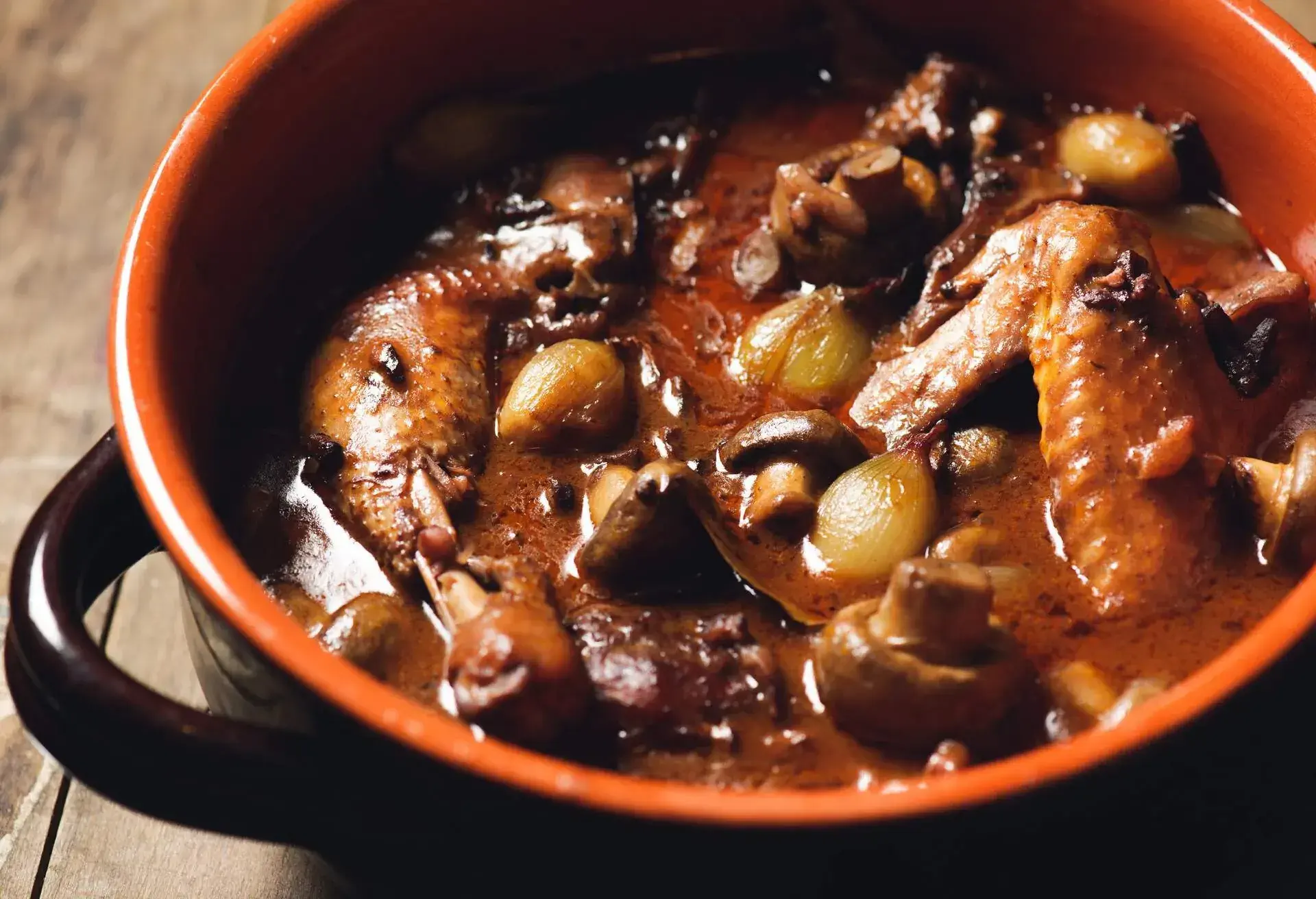
There’s no shortage of classic French dishes that often use wine in their cooking. Another such dish is the coq au vin, (rooster in wine). Similar in its cooking style to the boeuf bourguignon, the coq au vin uses chicken instead of beef. Onions, bacon lardons and mushrooms are added. Then, everything is covered with wine before the dish is gently simmered or thrown in an oven. The result? A rich, tasty stew that’s best served with even more red wine.
16. Dauphinoise Potatoes
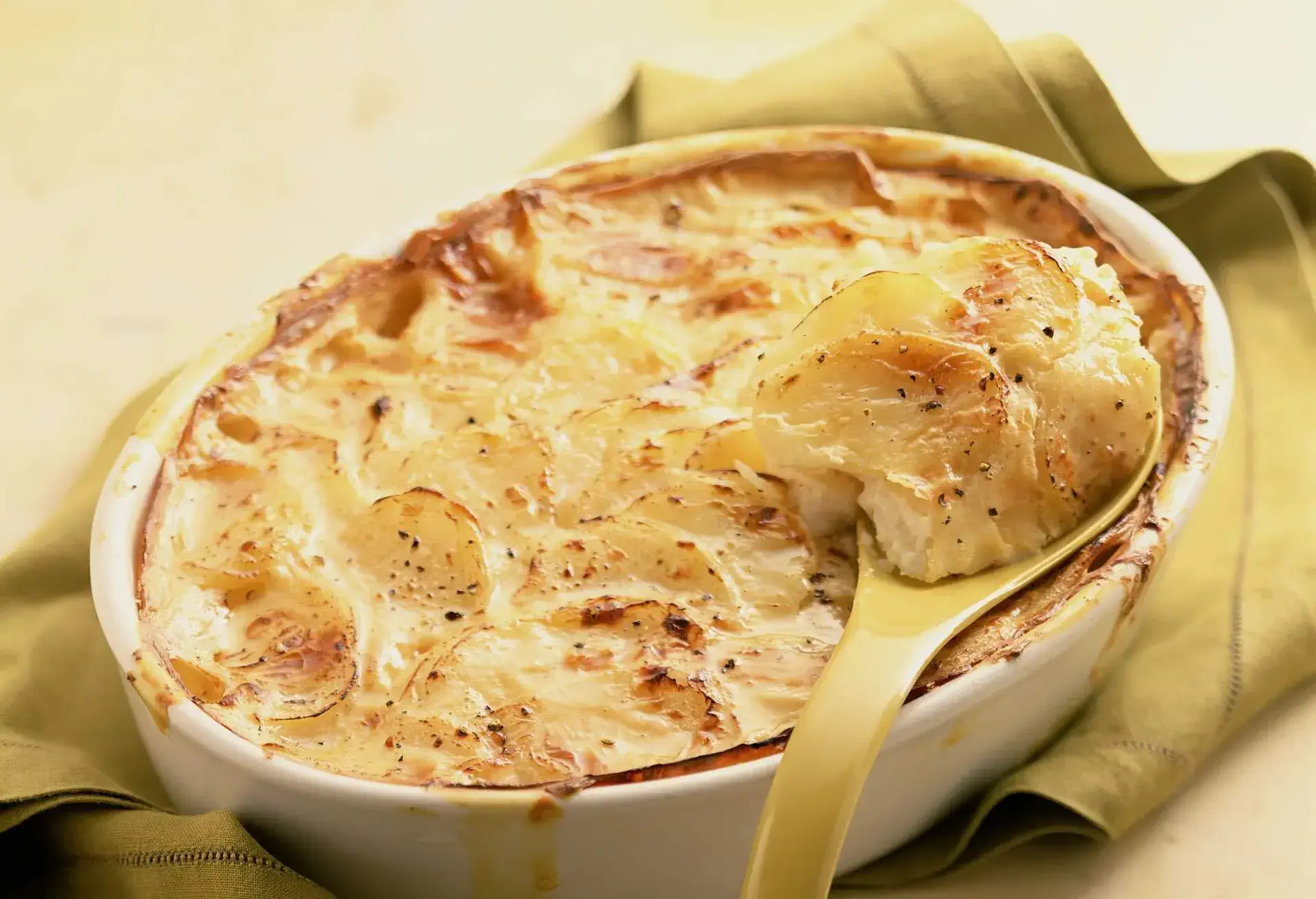
When it comes to sensational side dishes, France is a nation that knows how to pimp up a potato. If there were a competition, it would come tops. At the top of the list would surely be the dauphinoise potatoes. Originating from south-east France, this dish features thinly sliced potatoes layered with cream and garlic before being baked until crispy.
Like many traditional French food passed down between generations, there are variations – including versions with gruyere cheese on the top. Dauphinoise potatoes are a great side dish but you’ll likely be tempted to have them on their own, too.
17. Pommes Boulangère
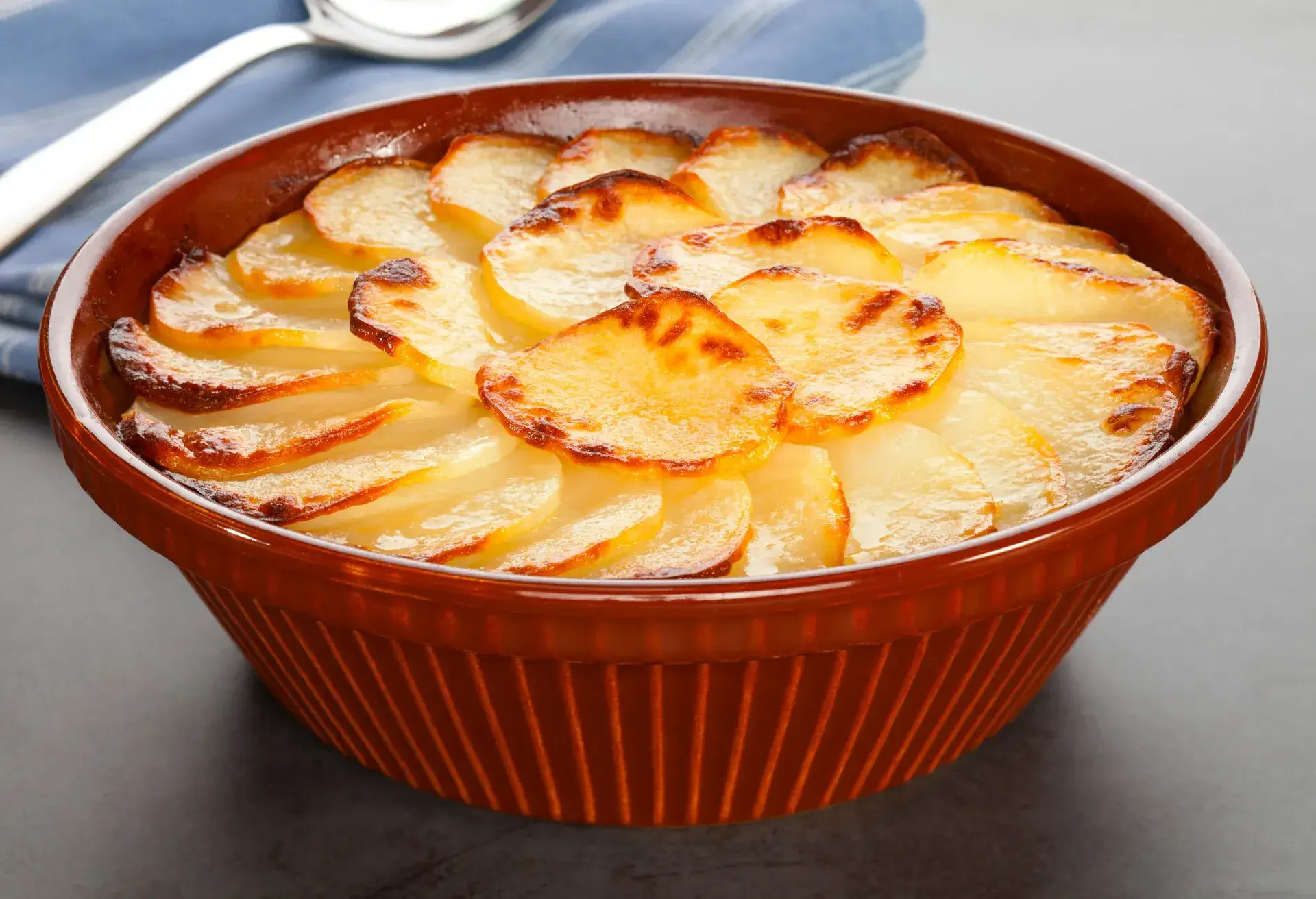
Another worthy addition to this list of traditional French food which boldly embraces rustic cooking is the pommes boulangère. Again, not too dissimilar to the dauphinoise potato, the pommes boulangère features layers of thinly sliced potatoes. Onions are also added and the sauce is made from rich chicken or meat stock instead of cream.
The name is testimony to its humble origins, where women in the village who didn’t have ovens would take their casseroles to the bakery on their way to church. They would pick up the tasty, crispy layered potatoes on the way back home in time for their Sunday lunch. To think that this delicious bake with humble beginnings now graces the best of restaurants in the world.
18. Tarte Tatin
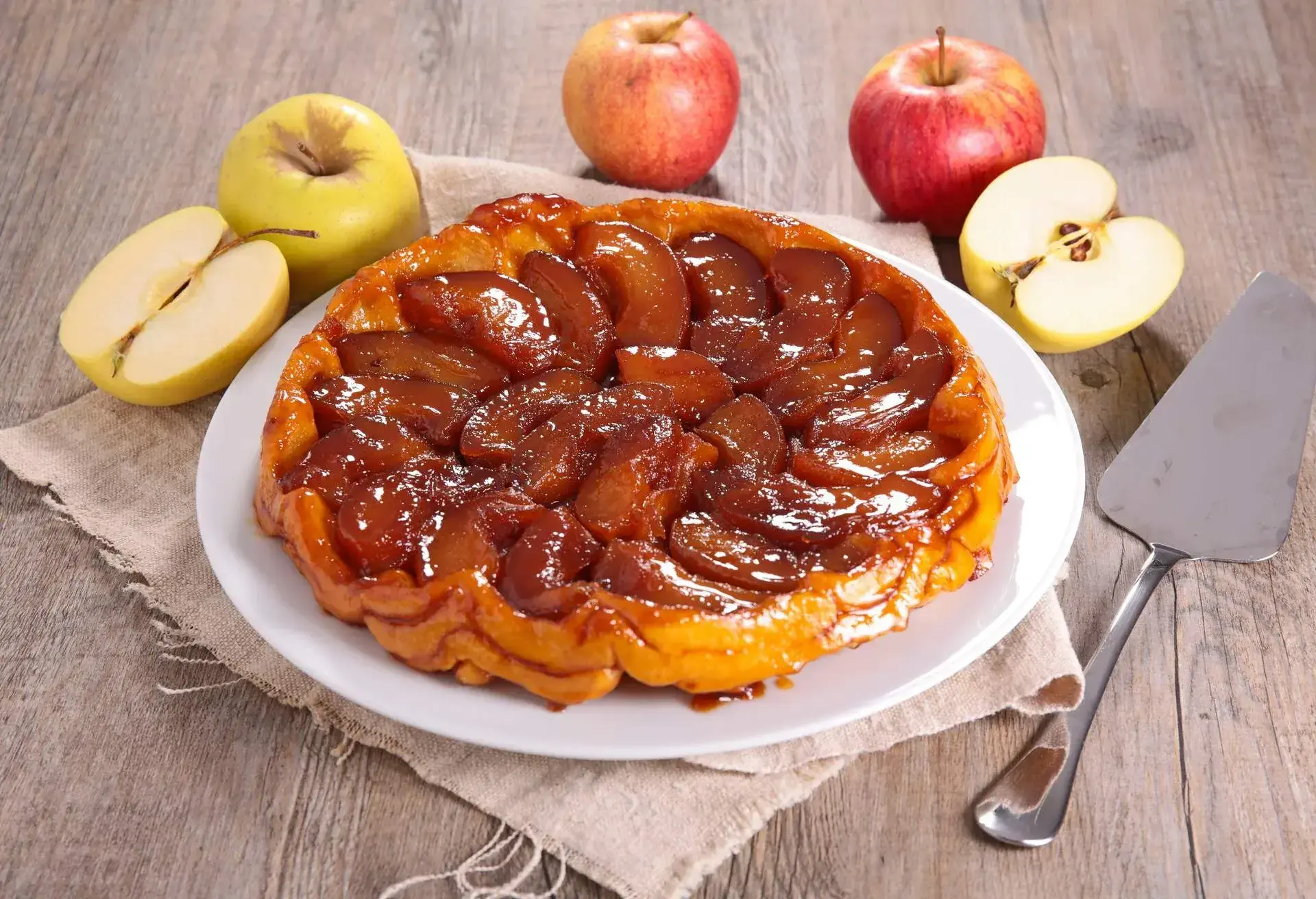
And now we move to the most favourite part of a meal: the dessert, of course! At the top of the list of sweet traditional French food has to be the tarte tatin. Ironic, seeing as it originated from a mistake. The story is that in 1898, Stephanie Tatin was trying to rescue some almost burned apples she had prepared for a tart. Instead of tossing them, she covered them with pastry and baked them with triumphant results.
To this day, the apples are caramelised with butter and sugar before being finished off in the oven. The tart is then served upside down so that the pastry is at the bottom when you eat it. You won’t find a better end to a meal, especially if you add some crème anglaise – a rich pouring custard flavoured with vanilla.
19. Crêpe Suzette
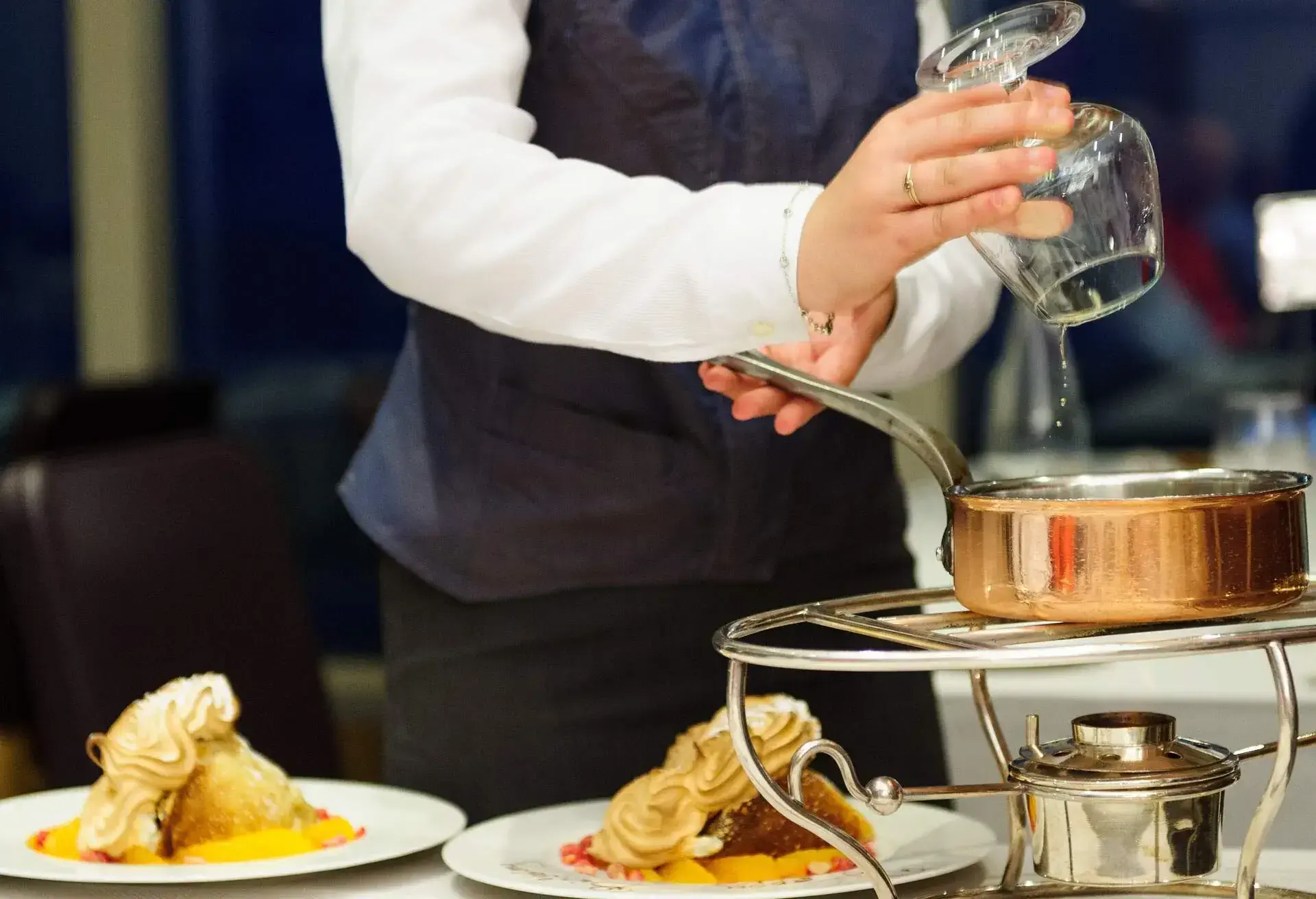
Yet another dish borne from a supposed mistake is the crêpe Suzette. It’s a thin pancake served with an orange and brandy sauce, commonly eaten with a dollop or two of ice cream. However, when a head waiter in 1895 attempted to serve the future King Edward VII this classic dish, the sauce accidentally caught fire. Instead of starting it all over, he served it anyway. The future King loved it so much and asked to name it Suzette, after a girl travelling in his entourage.
20. Quiche Lorraine
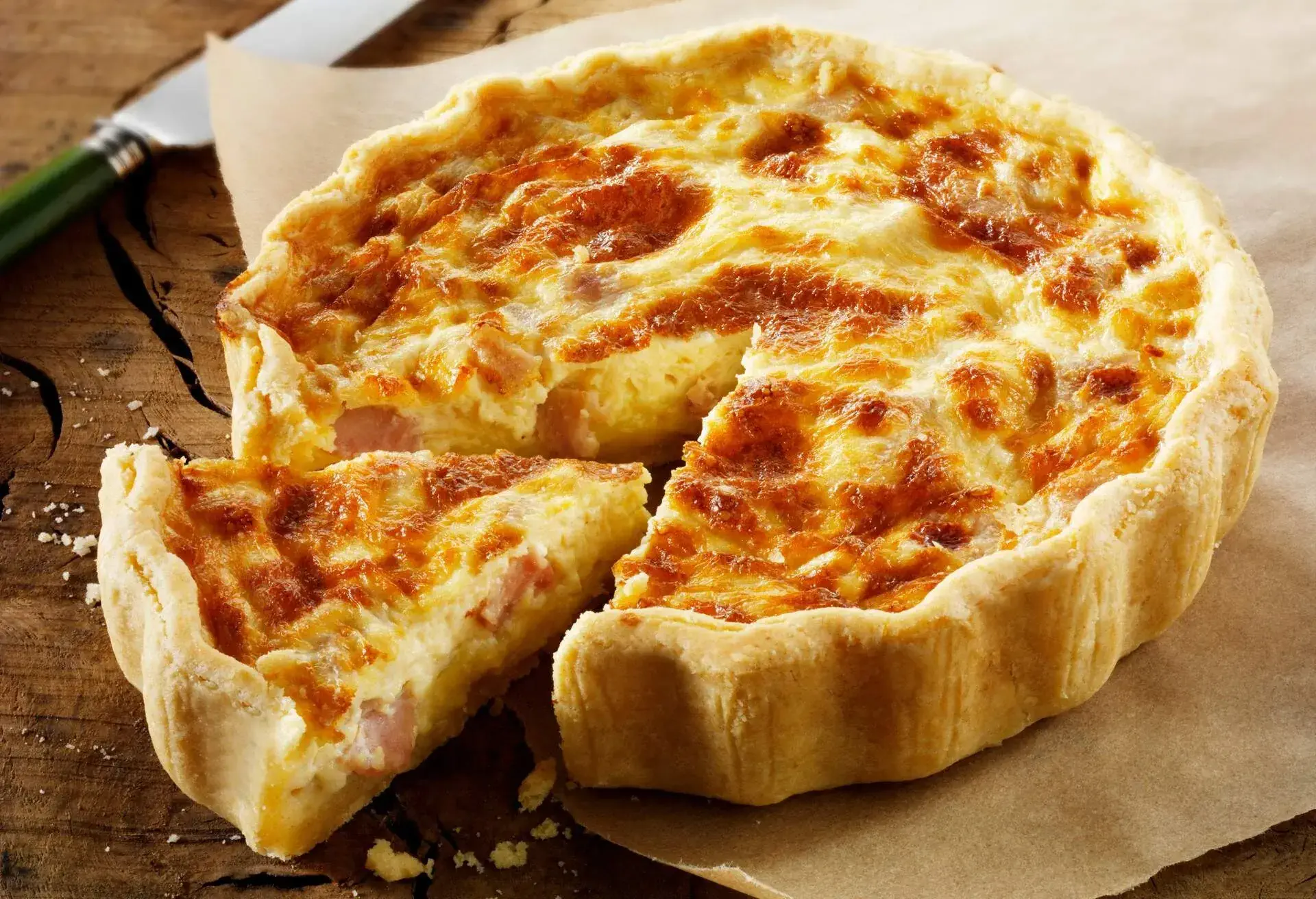
It would be remiss to talk about traditional French food and not mention the quiche Lorraine. Essentially a French tart with German origins, you can find this classic dish in any decent bistro. Originally an open pastry filled with savoury custard, bacon and cheese were later added to create the quiche Lorraine. Perfect eaten hot or cold.
More food inspiration
Want to take your taste buds on a tour of Europe? Discover KAYAK’s guide to traditional food in Poland or learn all about the best Swiss foods to try (and I don’t just mean fondue).






